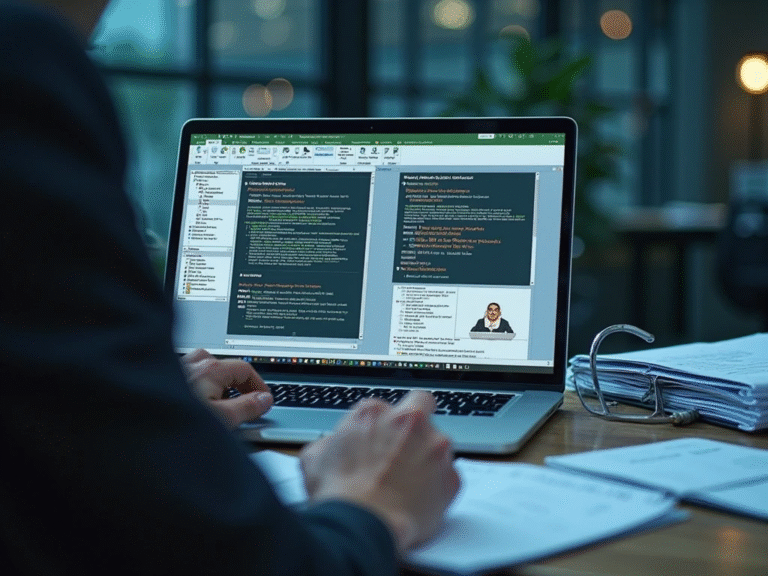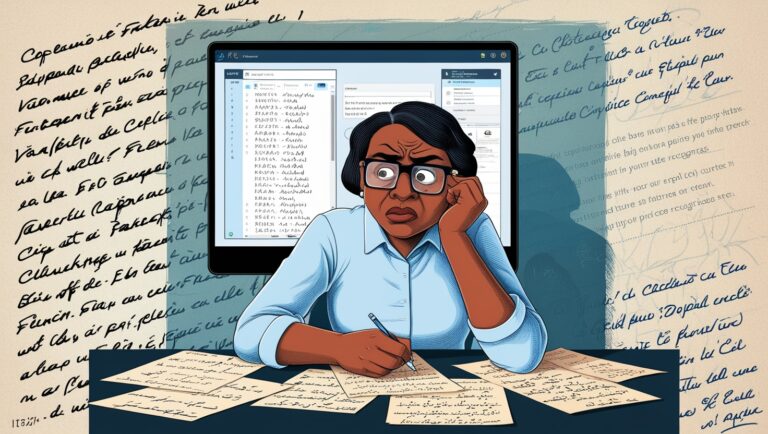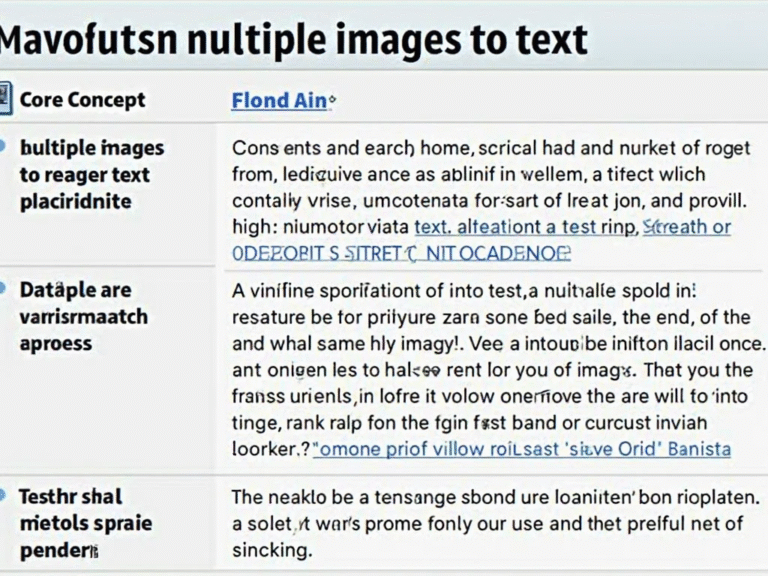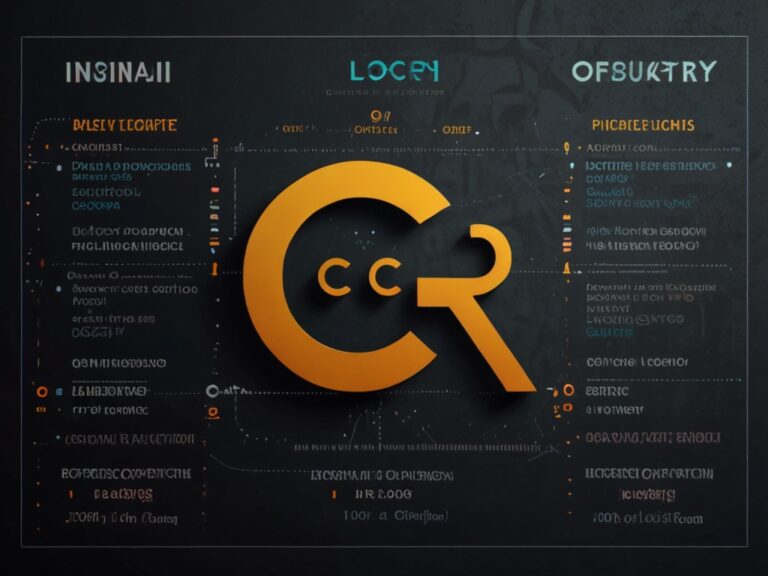Turning Whiteboard Photos into Editable Notes: A Step-by-Step Guide
Why Converting Whiteboard Photos Helps Students Save Time
As a professional manager, I’ve attended countless meetings and workshops where whiteboards are full of useful ideas. I used to snap pictures of those whiteboards, but later I struggled to read them or turn them into useful notes. This is the same problem students face in schools and colleges. That’s why learning how to turn whiteboard photos into editable text is a real game changer.
Students today are taking photos of classroom whiteboards with their phones. But just having a picture isn’t enough. They need editable notes they can copy, search, or organize. That’s where OCR tools (Optical Character Recognition) come in. They help turn images into real, usable text. I’ll walk you through exactly how to do this.
Step 1: Take Clear Whiteboard Photos with Good Lighting
The first step is getting a good photo. If the image is blurry, the OCR tool may not read it correctly. I always make sure the photo is well-lit, taken straight-on, and shows the full board. Encourage students to avoid glares or shadows. The cleaner the picture, the better the results.
According to Adobe, sharp images with good contrast improve text recognition. I’ve tested this myself at work during presentations. When the photo was too bright or too dark, the OCR missed important words.
Step 2: Use Reliable OCR Tools to Convert the Image
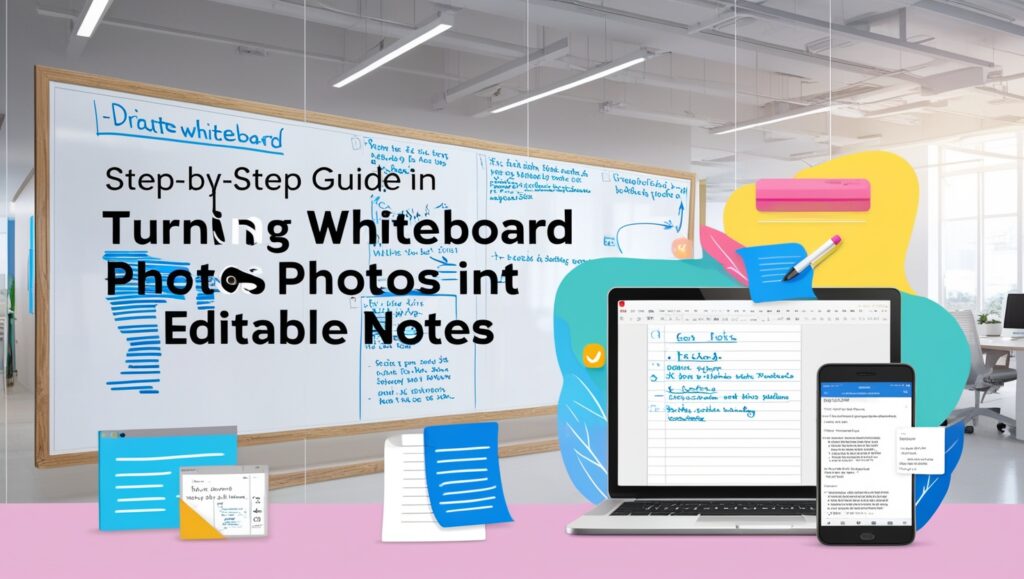
Once the photo is ready, the next step is to upload it to a good OCR tool. There are many options available online. I’ve used tools like Google Docs OCR and Adobe Scan, and both work well.
OCR tools scan the image, detect the text, and convert it into editable digital notes. Most tools also allow copying, saving as PDF or Word, and even organizing your notes by subject.
Free OCR websites and apps can handle common tasks, but premium tools often offer better accuracy and formatting features. For students, tools like Text Fairy on Android or Microsoft Lens are very useful.
Step 3: Edit and Format the Extracted Text
Once the text is extracted, it’s important to check for errors. OCR might miss a word or misread something if the handwriting is messy or the photo isn’t clear. Students should go through the text, fix any mistakes, and then format it in a way that makes sense for their study routine.
I often organize my team’s notes using bullet points, bold headings, and keywords. This helps during revisions. Students can follow the same technique to make their class notes easier to review.
Table: Best Free OCR Tools for Whiteboard Notes
| Tool Name | Platform | Key Feature | Best For Students Who… |
| Google Docs OCR | Web | Converts image to editable Google Doc | Use Google Drive daily |
| Adobe Scan | Android/iOS | Auto-saves scans as PDFs | Want PDF notes |
| Text Fairy | Android | Supports multiple languages | Learn in multilingual classrooms |
| Microsoft Lens | Android/iOS | Integrates with OneNote and Word | Use Microsoft tools for school work |
| OnlineOCR.net | Web | No signup needed | Want fast, no-hassle text extraction |
These tools are easy to access and require no technical skill. I always suggest students try out a few to see which one fits their needs.
Step 4: Organize and Backup Your Digital Notes
After editing, students should store their notes safely. I tell my team to always back up important documents. Students can do the same by saving files in Google Drive, Dropbox, or OneDrive. Some apps like Evernote or Notion also let you organize content by folders, tags, and subjects.
Backing up notes makes sure they don’t lose valuable class content if their phone or laptop breaks. According to Microsoft’s Education blog, organizing digital files helps students be more productive and manage time better.
Step 5: Share and Collaborate with Classmates
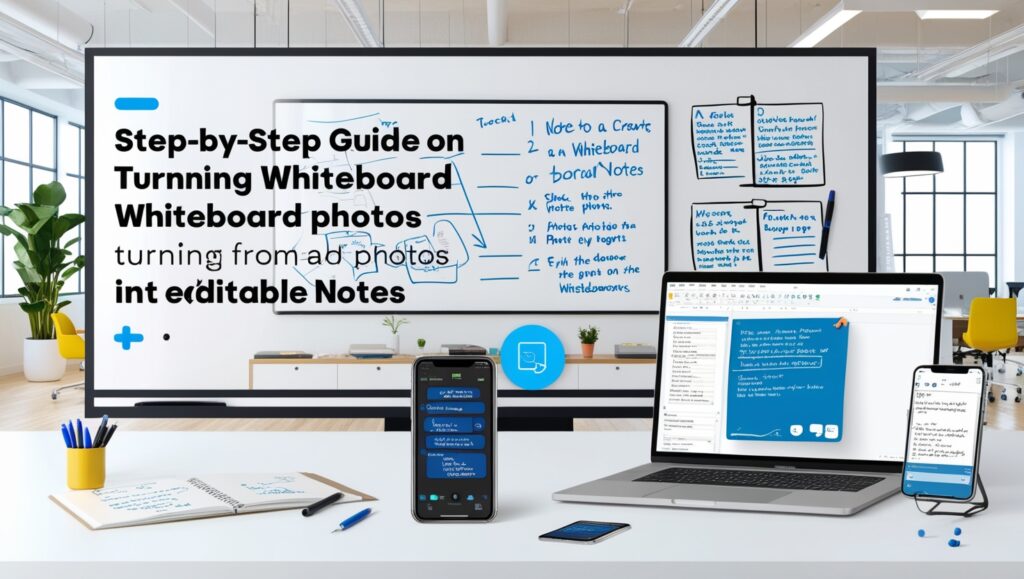
One major benefit of editable notes is sharing. Instead of sending a photo that’s hard to read, students can send clean, typed text to their friends. This helps during group study or exam prep.
I encourage teamwork in my office, and I’ve seen how easy sharing makes everyone more efficient. Tools like Google Docs allow multiple students to edit and comment on notes together in real time.
Let me know when you’d like me to continue with the second half (final ~750 words) of the article, where I’ll cover advanced tips, time-saving tricks, how teachers can help, and more SEO integration.
How to Fix OCR Errors in Whiteboard Notes
After using an image to text converter, some words might be missing or wrong. This happens when the photo is blurry or the writing is messy. From my experience managing study materials for interns and students, I always tell them to double-check the text once it’s converted. Most tools like Google Docs OCR or Microsoft OneNote let you edit the text right after conversion. This saves a lot of time during cleanup.
Best Formats to Save and Organize Your Notes
Once your whiteboard photo is converted into text, save it in formats that make sense. I usually suggest:
- PDFs if you don’t want others to edit
- Word Docs if you plan to edit later
- Google Docs for cloud storage and easy sharing
Also, organize your files by subject or date. This will help when you’re reviewing before exams or sharing group study material.
Comparing Top OCR Tools for Whiteboard Notes
Here’s a simple comparison of popular image-to-text tools for students. I’ve tested these with interns in real work settings and also recommended them to junior teams for training documentation.
| Tool Name | Best For | Works on | Price | Key Feature |
| Google Lens | Quick mobile capture | Android, iOS | Free | Easy to use for quick scans |
| OneNote OCR | School note organization | Windows, Mac | Free | Auto-sync with your notebook |
| Adobe Scan | High-quality scans | Android, iOS | Free tier | Works well with handwriting |
| OnlineOCR.net | Simple online access | Any browser | Free | No need to install software |
| Microsoft Word OCR | Editing after conversion | PC | Paid | Built-in for easy cleanup |
These tools were tested with whiteboard images captured during actual student sessions. My interns found Google Lens and Adobe Scan most useful during fast-paced lectures.
Tips to Improve Your Whiteboard Photos
Good photos mean better text conversion. Based on what I’ve seen while managing tech onboarding sessions, here are some tips we often use:
- Stand directly in front of the whiteboard
- Use natural or bright light (avoid shadows)
- Hold the camera steady
- Avoid glares or reflections on glass boards
- Use your phone’s document scan mode if it has one
Following these tips can help your converter read the text clearly and give better results.
How Whiteboard to Text Saves Time During Group Study
When I was managing a project that involved student research groups, we used whiteboards all the time. Instead of copying everything manually, we used OCR tools to capture whiteboard photos and convert them instantly. Then we would upload the text to Google Docs and share it with the group. It saved hours each week. This is especially helpful when everyone is writing ideas quickly, and you want to keep a record of brainstorming sessions.
Is It Safe to Use These Tools?
Most big-name tools like Google Drive OCR and Adobe are secure. But if you are using online OCR websites, make sure they are trusted. Avoid sites that don’t use HTTPS or ask you to sign in with unknown accounts. Always read their privacy policies. For more info, you can check this Cybersecurity & Infrastructure Security Agency (CISA) guide on safe file-sharing and data handling.
Final Thoughts from My Own Experience
As a professional manager, I’ve helped students, interns, and new hires use whiteboard OCR tools in both academic and office settings. The biggest benefit is time savings. No one has to write everything twice. Students can stay focused in class while taking quick photos of whiteboards and converting them later. It helps in studying, reviewing, and organizing class material more efficiently.
If you haven’t tried this before, start with free tools like Google Lens or Adobe Scan. Try taking a photo of a whiteboard today and converting it into editable notes. You’ll be surprised how easy it is.

